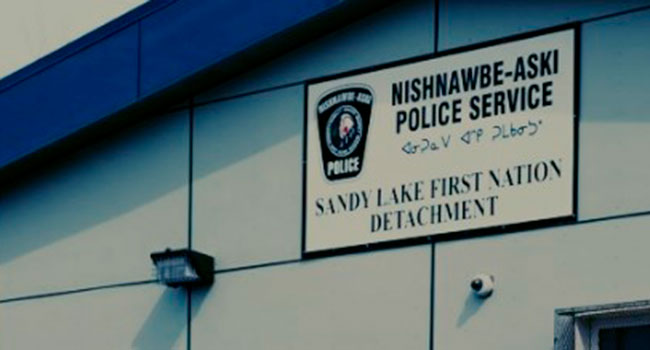 Putting more force into our police forces might seem intuitively like a logical way to more effectively fight crime. Real-life experience suggests that’s not necessarily so.
Putting more force into our police forces might seem intuitively like a logical way to more effectively fight crime. Real-life experience suggests that’s not necessarily so.
Experts say when using force is available, then it’s human nature for a trained police officer to fall back on that option when the going gets rough.
Too often, however, the use of a little force escalates into too much force. And we all know how that can end – in tragedy, and too often with a black, Indigenous or mentally distressed person as the victim.
A feature story from Canadian Press published over the weekend highlighted a remarkable alternative model, and one that might come from a surprising community.
The Nishnawbe Aski Police Service (NAPS) is Canada’s largest Indigenous police force. Headquartered in Thunder Bay, it polices more than 38,000 people in 34 communities in a sweeping area of northern Ontario.
In its 26 years of existence, no officer has ever shot and killed anyone, and none has died in the line of duty. And, notably, the police force achieved this with a fraction of the resources available to well-funded police departments in more populous parts of Canada.
It’s all the more remarkable, given the communities it serves are frequently in social distress, and hunting rifles and shotguns are as common as snowmobiles and ATVs.
This may seem to defy logic but scratching under the surface reveals a very simple reason for the success of NAPS: necessity.
With lower levels of funding than other police forces and with such a large area to cover, officers most often must work alone. If something goes wrong, backup may be hours away. They must count on their wits to deal with difficult and even dangerous circumstances.
They have quickly learned that building relationships with the people they serve is key. They can’t afford to be on hostile terms, because they just might need to count on citizens’ full co-operation when trouble breaks out.
“In the past, you might have been the only officer in there,” NAPS chief Roland Morrison said in an interview with Canadian Press. “You would have no radio, you’ve got no backup, so you really effectively have to use your communication and talk to people. You have to develop relationships with the communities in order to have positive policing.”
Equally important, the Indigenous communities see themselves in the faces of the 203 officers on the force. About 60 per cent of the officers are Indigenous, and all of the officers understand their mandate is culturally responsive policing.
I don’t know enough about the NAPS experience overall to heap unreserved praise on the organization. But I do know that if the object of a police service is to keep the peace, then this department has something special going on. Heavily armed police forces in southern Canada need to pay attention and see what they could learn from this department.
For one thing, they might realize that pulling out a Taser at the first sign of trouble may subdue an agitated suspect in the moment but doesn’t do much to assure the public that non-violence is the overarching goal of their police department.
It also sheds a new light on the whole debate about defunding police departments. Adding more money – more weapons, more equipment, more officers – doesn’t provide a straight line to happier and safer communities. Quite the opposite: It’s a sign that non-violent tactics have failed and it’s time to retreat into gated communities.
Take some of that money away and police officers might be forced to become more resourceful. They might more deeply appreciate the value of building bridges with the people they’re supposed to protect. And it will certainly make some of the more macho officers think twice before laying on heavy hands.
Is there a risk to any of this? Will we face the possibility of officers not showing up at our door when we call?
Perhaps. More likely, though, we’ll see our police departments rethinking their roles and approaches.
Maybe they’ll become more of the peacekeepers they should be rather than tough guys who think their role is to subdue threats by force.
Veteran political commentator Doug Firby is president of Troy Media Digital Solutions and publisher of Troy Media.
The views, opinions and positions expressed by columnists and contributors are the author’s alone. They do not inherently or expressly reflect the views, opinions and/or positions of our publication.


